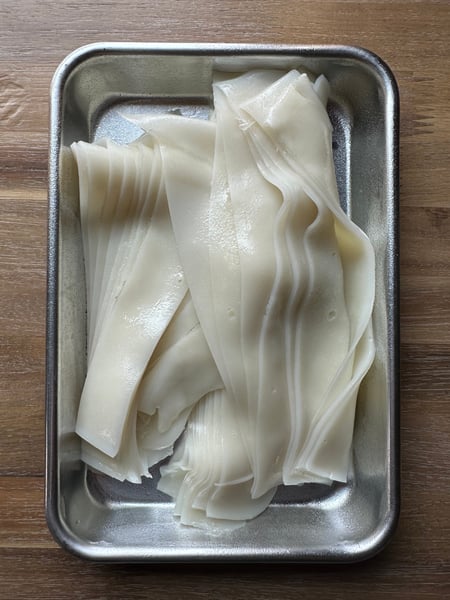The idea of making something at home that is normally bought ready-made from the store can be very romantic. Its nice to think that the extra freshness, and added “made with love” energy that comes along with making something from scratch will necessarily boost the delicious flavor of said item as well. Sadly, however, this is not always the case.
There are a lot of things that even skilled chefs probably can’t do as well as the companies that make a given product to stock store shelves, and when I see them on a restaurant menu I solemnly shake my head and think “why do this?” Ketchup, for instance, is one of these items. I’m sorry, but you are just not going to make ketchup at home that is as good as, let alone better than, the bottle you can pick up at the store for a few bucks. Not to mention you will spend a lot of time and effort in the process of trying to improve what has already been perfected. Potato chips are another one. Home and restaurant kitchens are just not equipped to make potato chips to the level of quality that can be achieved by a dedicated factory. Almost across the board “house made” potato chips at a restaurant are likely to be a disappointment.

Alas, unless you live somewhere you can source freshly made hor fun noodles (like NYC), your only option for recreating these dishes at home is to make the noodles yourself. This can seem like a daunting prospect because most home cooks here in the U.S. are not used to making noodles out of anything but wheat flour. Thankfully making hor fun noodles at home is easy. In fact, I’d say it's much easier than trying to make pasta at home (pasta is another one of those things that, for the most part, people should probably just buy from the store). If you can use a scale and have the skill of stirring, you can probably make these noodles successfully on your first try.
So, let's take a look.
Hor Fun Noodles
Scroll down for a printable version of this recipe
Yield: 4-6 servings (about a pound of finished noodles)
Prep Time: 5 minutes
Cook Time: 10 minutes
Inactive Time: 1 1/2 hours
135 grams rice flour
20 grams tapioca or potato starch
5 grams salt
305 grams water
Before we begin, it's worth mentioning that you can’t just use whatever rice flour here. It's critical that you use Asian/Chinese style rice flour. It is ground incredibly fine and most often it comes in a plastic bag looking like this:
Also while your noodle batter is resting, start heating the water in your steamer so it's got a nice head of steam by the time you’re ready to cook the noodles.
Once the batter is done resting, spray your mold with oil, and dose out some of the batter. For my 1/8 sheet tray I use about 50 grams of batter, but you can dial in your dose to the size of your mold, and your noodle thickness preference (more batter, thicker noodle).
Hor Fun Noodles
Ingredients
- 135 grams rice flour
- 20 grams tapioca or potato starch
- 5 grams salt
- 305 grams water
Instructions
- Combine all the ingredients in a bowl and mix thoroughly. Then cover the bowl and let it rest for 30 minutes.
- While the dough rests, start heating the water in your steamer so it's ready to cook the noodles.
- Once the batter is done resting, spray your mold with oil, and dose out some of the batter.
- Place your prepped mold into the steamer, cover and steam for five minutes. When the noodle is done steaming it should look semi-translucent, and fully set.
- Remove your mold from the steamer, and—using a rubber spatula— remove the noodle sheet from the mold and place on your tray or whatever you’re using to hold your cooked noodles. Finish by lightly spraying the finished noodle sheet with oil.
- Reload your mold, and repeat the process until all your batter is used. Stacking the finished noodle sheets as they come out of the mold.
- To make the stacked sheets into noodles simply cut into your desired width. I go for about 1.5”.
- Now all that's left to do is stir fry them up into a delicious dish and enjoy!
